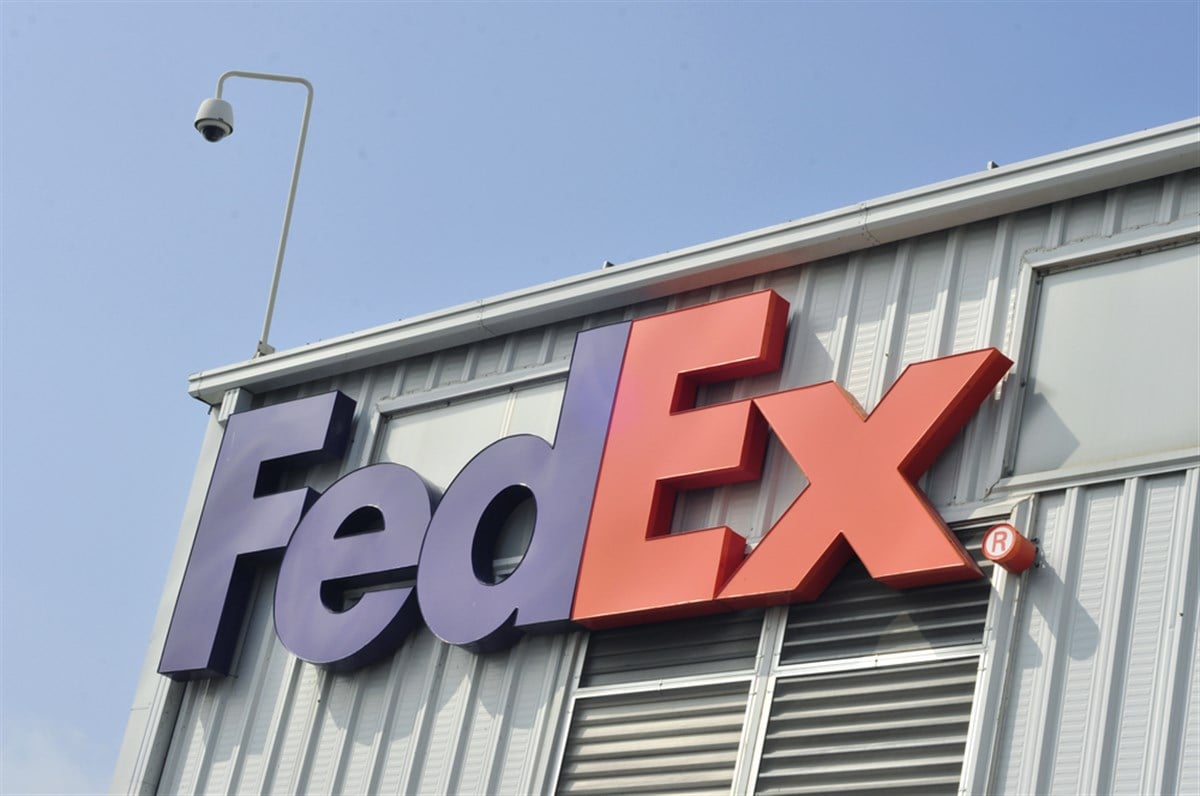 FedEx experiences turbulence, missing the delivery deadline Analyzing FedEx’s turbulence to reveal economic challenges, competitive pressures, and financial implications.
FedEx experiences turbulence, missing the delivery deadline Analyzing FedEx’s turbulence to reveal economic challenges, competitive pressures, and financial implications.
This story originally appeared on
MarketBeat
FedEx (NYSE: FDX), a global leader in the transportation and logistics sector, has been surrounded by unexpected turbulence in recent months.The once reliable delivery giant stumbled in its second quarter, missing analyst expectations and sending its stock price into a tailspin.This unexpected detour has raised concerns about the company’s future trajectory and prompted investors to re-evaluate their positions.
Facing headwinds: Why FedEx is stalling
FedEx’s recent stumbles cannot be attributed to one factor.Instead, forces have conspired to create a perfect storm, delaying the delivery giant’s progress.Economic uncertainty poses a significant challenge.Weaker global economic growth has dampened demand for shipping services, for consumer goods and business-to-business transactions.
This slowdown directly impacts FedEx’s top line, making it difficult to achieve revenue targets.
Competition within the delivery landscape has intensified.Established players like
United Parcel Service Inc.
(NYSE: UPS) and Deutsche Post AG (OTCMKTS: DHLGY) remain formidable rivals.At the same time, the emergence of agile e-commerce fulfillment specialists has chipped away at FedEx’s market share.This competitive pressure squeezes margins and forces the company to innovate and adapt to stay relevant.
Unveiling the numbers: FedEx’s financial health
Understanding
FedEx’s recent struggles requires a close examination of its financial health.Year-over-year growth has dipped into negative territory, marking a worrying trend.While this decline stems partly from broader economic headwinds, it also reflects FedEx’s growing competitive landscape within the delivery space.Earnings per share (EPS) presents a mixed picture.
While some quarters have produced modest growth, overall performance has met analyst expectations.This inconsistency in EPS numbers underscores the volatility the company is currently facing.
Profit margins, a crucial indicator of operational efficiency, also need clearer direction.Some segments have maintained decent margins, while others have seen concerning erosion.This uneven performance suggests internal challenges and disparities in response to external pressures.
Debt levels, however, remain within a manageable range.The debt-to-equity ratio, a measure of financial risk, hasn’t breached any significant thresholds.This provides some buffer for the company as it navigates its current difficulties.
Trends emerge that raise further questions.
Capital expenditure, historically a driver of growth, has shown signs of restraint.This could be a strategic move to weather the storm or indicate a lack of confidence in future growth prospects.
Furthermore, comparing FedEx’s performance to industry benchmarks reveals a worrying gap.Rivals like UPS and DHL have managed to navigate the same economic climate with greater financial stability.
This highlights the need for FedEx to identify and address its specific vulnerabilities.
Should you hold tight or hit the brakes?
The question swirling around FedEx isn’t merely “What went wrong?” but “Where do we go from here?” For investors, navigating the company’s turbulent present requires carefully assessing analyst opinion, market conditions, and potential returns.
Analyst ranks present a spectrum of perspectives.Some remain cautiously optimistic, highlighting the company’s strong brand recognition and potential for strategic maneuvers.Others have issued downgrades, expressing concerns about slowing revenue growth and the intensifying competitive landscape.Target prices for the stock range widely, reflecting the volatility and uncertainty surrounding FedEx’s future trajectory.
Beyond analyst sentiments, the broader transportation and logistics market paints a complex picture.While e-commerce growth offers a silver lining, the global economic slowdown casts a shadow.Rising fuel costs and potential labor unrest further add to the challenges.These macroeconomic factors undoubtedly impact FedEx’s cost structure and demand for its services, demanding careful consideration by investors.
Ripple effects and road to recovery
FedEx’s current struggles are not merely an isolated case of corporate turbulence.As a significant player in the global transportation and logistics sector, the company’s performance holds significance for the broader economic landscape.
FedEx’s stumbles act as a bellwether for overall economic health.
Its dependence on international trade and business activity makes it sensitive to shifts in global economic sentiment.Weak performance can indicate a broader economic slowdown, potentially impacting investor confidence and consumer spending across various sectors.For example, a decline in demand for shipping services could negatively affect
manufacturers, retailers and logistics providers linked to the global supply chain.
The implications for other businesses extend beyond direct financial impact.
A struggling FedEx might implement cost-cutting measures, potentially affecting employment within the transportation and logistics sector.Additionally, its current challenges could further intensify competition in the delivery space as rivals vie for a larger share of a potentially shrinking market.
Several scenarios hold promise for future improvement.A recovery in the global economy, driven by factors like policy interventions or easing inflation, could reignite demand for shipping services and boost FedEx’s revenue.Additionally, the company’s continued investment in innovative technologies like automation and AI could lead to cost reductions and enhanced service offerings, fostering a competitive edge.
Although FedEx’s recent troubles have raised questions about its future, their ramifications go beyond the company itself.Its performance reflects the broader health of the economy, and its future path could have an impact on a variety of industries.
A more comprehensive picture considers the possibility of a comeback, driven by both external factors and internal strategic changes.For investors and stakeholders alike, navigating this complicated situation requires a close eye on both the headwinds and tailwinds that could influence FedEx’s journey ahead..
